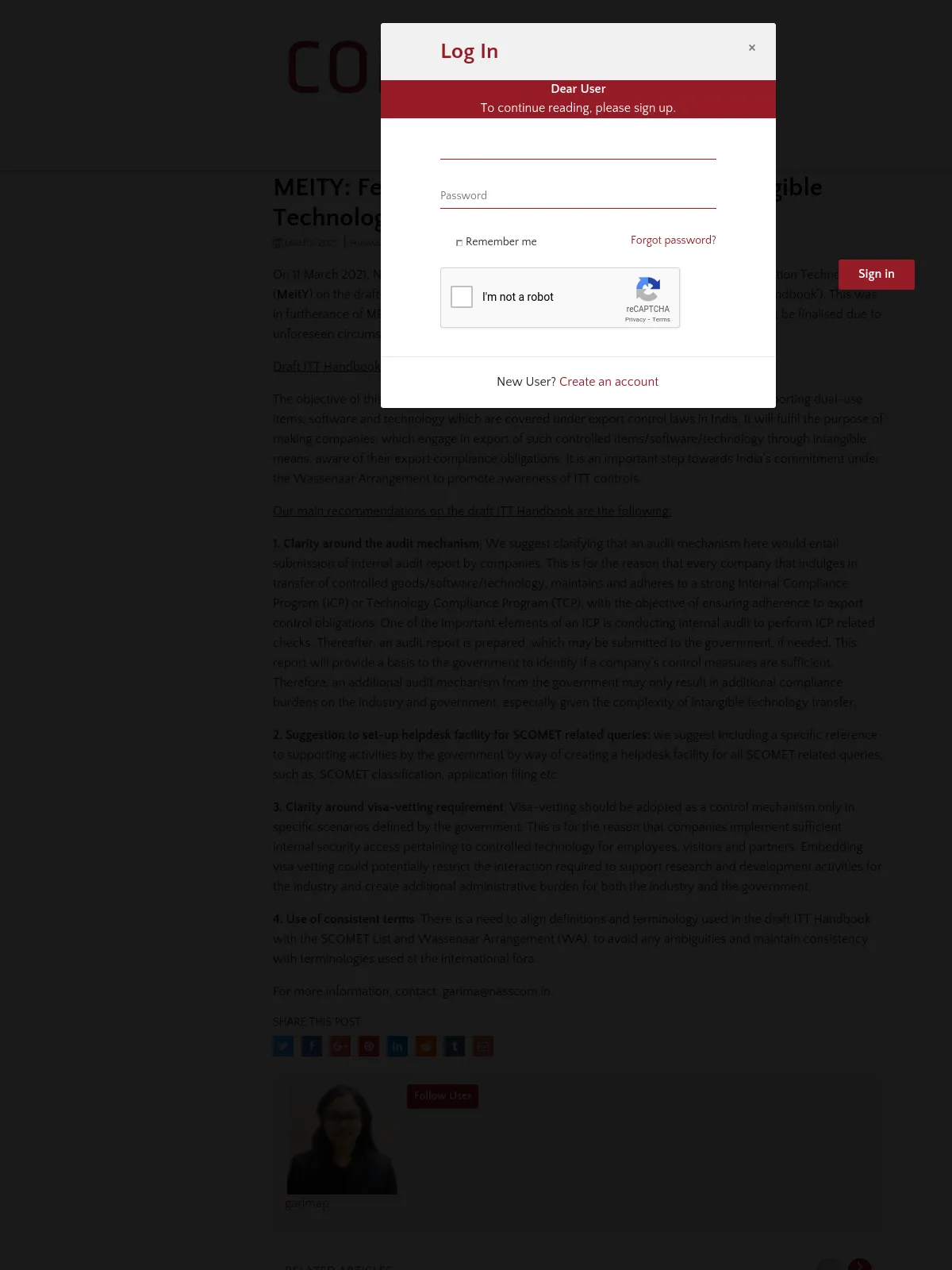MEITY: Feedback on Draft Handbook of Intangible Technology Transfer Controls
Blog: NASSCOM Official Blog
On 11 March 2021, NASSCOM submitted its feedback to the Ministry of Electronics & Information Technology (MeitY) on the draft Handbook on Intangible Technology Transfer (ITT) Control (‘draft ITT Handbook’). This was in furtherance of MEITY’s efforts to finalise this ITT Handbook from last year, which could not be finalised due to unforeseen circumstances. NASSCOM had given feedback given last year as well (here).
Draft ITT Handbook
The objective of this ITT Handbook is to be used as a reference document for companies exporting dual-use items, software and technology which are covered under export control laws in India. It will fulfil the purpose of making companies, which engage in export of such controlled items/software/technology through intangible means, aware of their export compliance obligations. It is an important step towards India’s commitment under the Wassenaar Arrangement to promote awareness of ITT controls.
Our main recommendations on the draft ITT Handbook are the following:
1. Clarity around the audit mechanism: We suggest clarifying that an audit mechanism here would entail submission of internal audit report by companies. This is for the reason that every company that indulges in transfer of controlled goods/software/technology, maintains and adheres to a strong Internal Compliance Program (ICP) or Technology Compliance Program (TCP), with the objective of ensuring adherence to export control obligations. One of the important elements of an ICP is conducting internal audit to perform ICP related checks. Thereafter, an audit report is prepared, which may be submitted to the government, if needed. This report will provide a basis to the government to identify if a company’s control measures are sufficient. Therefore, an additional audit mechanism from the government may only result in additional compliance burdens on the industry and government, especially given the complexity of intangible technology transfer.
2. Suggestion to set-up helpdesk facility for SCOMET related queries: we suggest including a specific reference to supporting activities by the government by way of creating a helpdesk facility for all SCOMET related queries, such as, SCOMET classification, application filing etc.
3. Clarity around visa-vetting requirement: Visa-vetting should be adopted as a control mechanism only in specific scenarios defined by the government. This is for the reason that companies implement sufficient internal security access pertaining to controlled technology for employees, visitors and partners. Embedding visa vetting could potentially restrict the interaction required to support research and development activities for the industry and create additional administrative burden for both the industry and the government.
4. Use of consistent terms: There is a need to align definitions and terminology used in the draft ITT Handbook with the SCOMET List and Wassenaar Arrangement (WA), to avoid any ambiguities and maintain consistency with terminologies used at the international fora.
For more information, contact: garima@nasscom.in.
The post MEITY: Feedback on Draft Handbook of Intangible Technology Transfer Controls appeared first on NASSCOM Community |The Official Community of Indian IT Industry.
